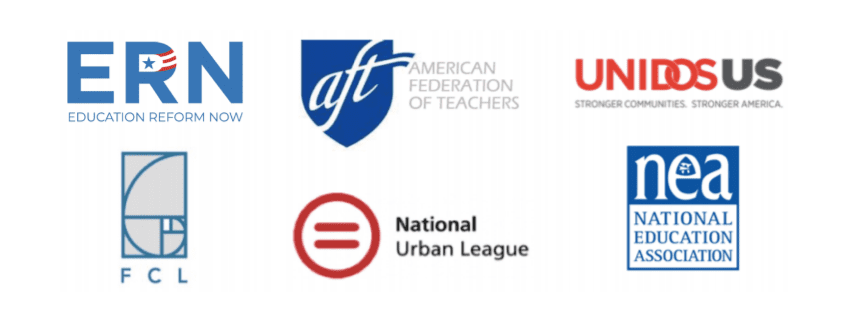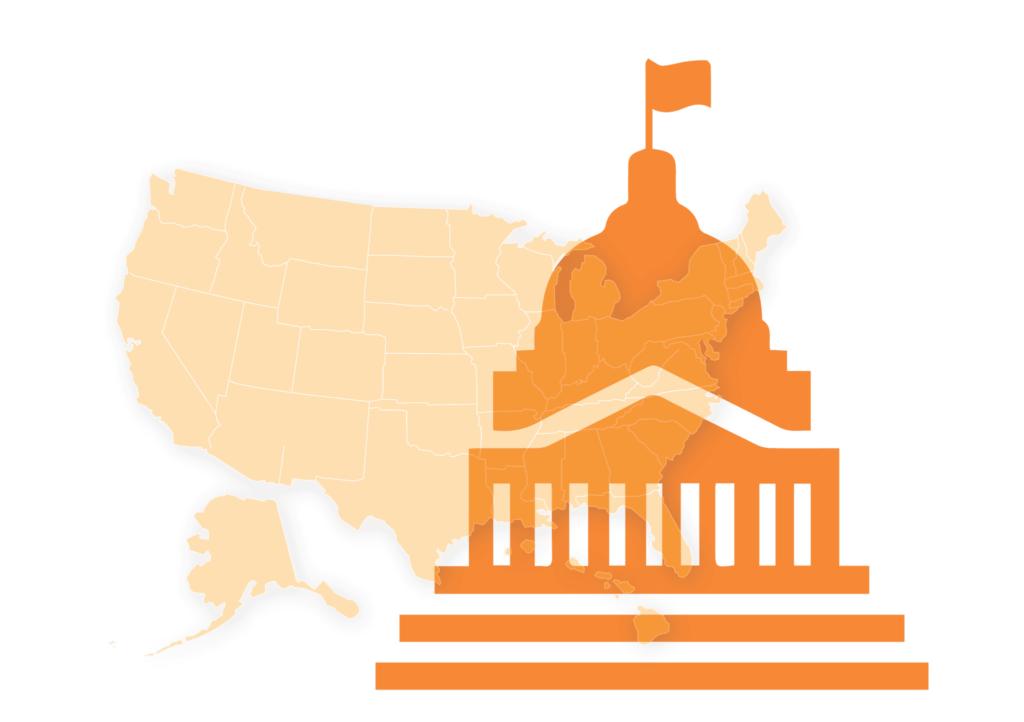Dear Mr. Secretary:
We write regarding President Biden’s March 7, 2021 Executive Order directing federal agency leaders to consider and report within 200 days on ways their agencies might promote voter registration, education, and participation. We have a number of recommendations for you to consider.
We believe that among the best ways we can ensure education policies reflect the needs of communities is by ensuring every American—particularly those in groups that historically have been disenfranchised—is empowered with knowledge and an expanded opportunity to exercise the right to vote. The U.S. Department of Education can facilitate civic education and empowerment through a series of non regulatory, sub-regulatory, and formal rulemaking actions.
We urge you to consider each of the below in meeting President Biden’s Executive Order directive to each agency head to submit a strategic plan to increase voter registration and voter participation.
RECOMMENDATIONS
1. “Check-the-Box” Voter Registration Upon FAFSA Completion
One of the more encouraging recent signs for our democracy is the increased percentage of young people voting in national elections. Still, only 53 percent of young people ages 18-29 were registered and participated in the most recent election. To spur heightened voter registration and participation levels of young people and others, 19 states now enable individuals to check-a-box and automatically register to vote as they are applying for public services with state agencies, including but not limited to state Departments of Motor Vehicles. In December 2020, New York was the latest state to pass an automatic voter registration law including a check-the-box registration option for citizens interacting with, among other public entities, New York State public colleges.
We recommend the U.S. Department of Education (ED) include a similar “check-the-box” automatic voter registration option for those applying for federal financial aid via the Free Application for Federal Student Aid (FAFSA) process. Over 90 percent of all FAFSA filing is conducted electronically and all necessary voter registration information already is included in completed FAFSA submissions. All that would be required is a check-the-box option following FAFSA completion enabling prospective students to register to vote at their home domicile. In cases where a state designates ED a voter registration agency, as per President Biden’s Executive Order and consistent with section 7(a)(3)(B) of the National Voter Registration Act, prospective students would automatically be registered. In other states, ED would convey relevant student information to the appropriate state agency. Either way, voter registration could be counted on to expand.
2. ED Facilitation of Vote-by-Mail
As per the FAFSA submission process, the Office of Federal Student Aid (FSA) has on file the email addresses of over 20 million Americans enrolled in institutions of higher education. In 2013, ED made use of this email list to ensure federal student loan borrowers were aware of the variety of repayment plans in which they may enroll, including income-driven repayment.
We urge ED to make similar use of email addresses on file with FSA to make students aware of vote-by-mail opportunities and facilitate such through internet links to appropriate state and local entities, if not provide vote-by-mail application materials to all students. Concurrent with this outreach, we urge ED to conduct a social media campaign on vote-by-mail opportunities via Instagram, YouTube, Facebook, Twitter and the like geared toward current voting age students. Just as “Rock-the-Vote” was groundbreaking 30 years ago, an affirmative “Vote-by-Mail” campaign directed at college students can be groundbreaking today.
3. Work Study Aid in Support of Voting Rights
Beginning in 1993, Congress required that seven percent of what is now over $1 billion in annual Federal Work Study funding be spent on community service activities absent a waiver from the U.S. Department of Education. In meeting the seven percent community service expenditure requirement, ED’s regulations provide students may be employed performing “civic education and participation activities,” but do not specify voter registration, non-partisan voter education, or voter participation work (such as serving as a poll worker) as allowable activities.
We recommend ED issue sub-regulatory guidance that clarifies to institutions of higher education Federal Work Study community service activity may include voter registration, non-partisan voter education, and non-partisan voter participation work — on or off-campus, under the aegis of the institution of higher education itself or separate public or private entity, including non-profit organizations. Ideally, the underlying Federal Work Study regulation itself would so clarify.
In the most recent year prior to COVID-19, out of over 800,000 Federal Work Study participants, in excess of 100,000 students engaged in paid community service work. ED’s last major report on the federal work-study program found another near 100,000 students were not even aware they could do paid community service work. An additional near 60,000 students reported they would have done paid community service if they could find an opportunity to do so. We believe clarifying to institutions, students, and voter participation organizations the opportunity to make use of work study funds for voter engagement work would lead to heightened civic participation.
4. Voter Registration Upon Course Registration
Finally, we highlight that section 487(a)(23) of HEA also requires each institution of higher education to make a “good faith effort” to distribute voter registration information to all certificate and degree-seeking students. That requirement can be met with transmission of an electronic message containing a voter registration form or simple conveyance of a link to a website from which a form may be downloaded. To actually be heeded by students, however, and increase the likelihood of expanded access to voter registration as per President Biden’s recent Executive Order, more is required than mere receipt of an electronic link absent any context.
In order to meet the strictures of Section 487(a)(23) and be consistent with President Biden’s Executive Order stating Administration policy, we recommend ED regulate the “time and manner” in which electronic messages relating to voter registration are conveyed. To maximize the likelihood that students will receive and pay attention to the voter registration information, the Secretary should require such information be conveyed in conjunction with other steps associated with enrollment that require student attention, such as the course registration or student identification card application processes. The Department of Education Organization Act gives the Secretary authority to “prescribe such rules and regulations as the Secretary determines necessary or appropriate to administer and manage the functions of the Secretary or the Department,” which of course includes compliance with the spirit, intent, and letter of the law as well as Administration policy.
In fact, we urge you to go even further and clarify that institutions of higher education be considered to have demonstrated a good faith effort in support of voter registration as per HEA Section 487(a)(23) if they make check-the-box automatic voter registration an option for students upon course registration or student identification card application consistent with state law or otherwise in conjunction with the relevant state or local entity responsible for voter registration and certification thereof. Rather than a passive paper or electronic message from colleges encouraging voter registration, institutions of higher education that receive over $150 billion a year in public student aid support (independent of billions more in research funding) should be encouraged if not required to make the option to register to vote part of an experience in which all eligible enrolled students participate.
Pending legislation, H.R. 1, “The For The People Act,” which has passed the House of Representatives, includes a provision requiring voter registration information be conveyed attendant to course registration, but we believe the policy can be executed via regulatory action and encourage you to begin that process immediately. Time is of the essence. At a time that many are working to suppress ballot access for voters, particularly voters of color, we are committed to ensuring that all voters have the tools and knowledge to ensure their ballots are cast and counted. We are certain you share that commitment and look forward to working with you in the time ahead.
Sincerely,

 June 21, 2021 by
June 21, 2021 by 



